LESSER BLACK BACKED GULL : Larus fuscus
Where to see them : Along our coasts and sometimes inland.
Lesser black-backed gulls can be so easily confused with their larger counterparts, the much great black-backed gull described above. Their backs though are more a slate-grey colour. Another useful way for differentiation is to look at their legs which is bright yellow, most so in the breeding season.
Most lesser black-backed gulls migrate south in winter and do not reappear until March and April.
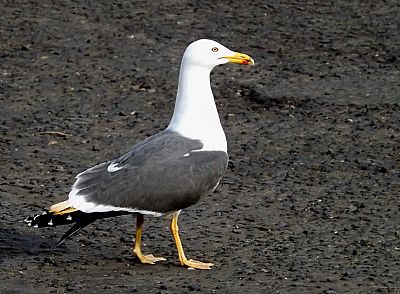
One of a squabble of lesser black backed gulls in central Dumbarton looking for discarded fast food.
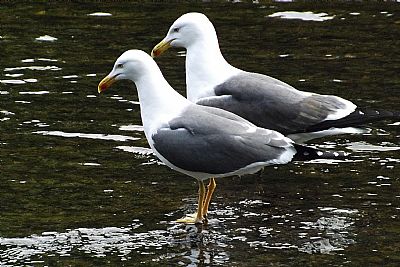
Two lesser black backed gulls paddling in the Leven.
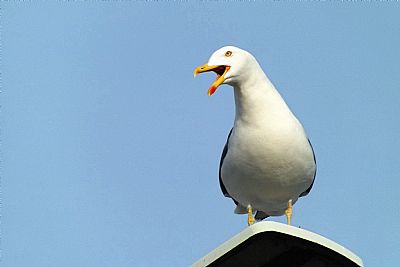
And if the Leven doesn't provide a tasty morsel, then those overflowing wheelie bins in Alexandria are a good bet. Great vantage point up here on the lamp post. Just grumpily squawking away up here until those humans pass by first.
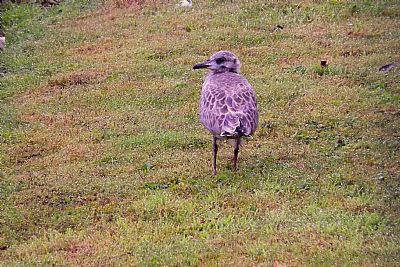
This is quite a common sight in mid summer. A lesser blackback gull chick wanders the streets, or in this case, Lomond Industrial Estate, much distressed by what it finds at ground level. Above, two gulls, presumably its parents, cry a raucouos reprimand to it and warning to anyone and everyone below. These gulls tend to nest on flat roofs and box gutters and industrial buildings. Many a chick makes the mistake of believing it is time fledge and plummets earthwards. They almost all survive although some get injured in the fall while others may be eaten by predators.
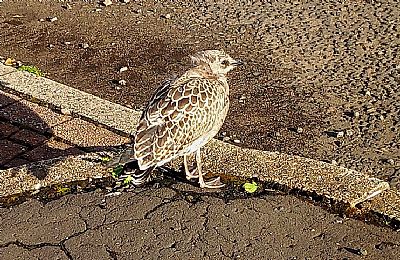
A chick wanders around the carpark of some Dumbarton central flats. An almost perfect camouflage. Perhaps too perfect as it tended to simply lie low when a car came near.

